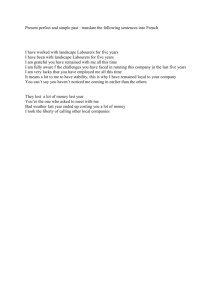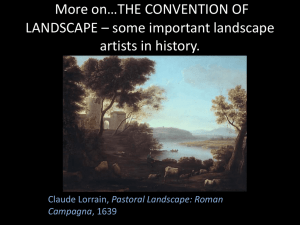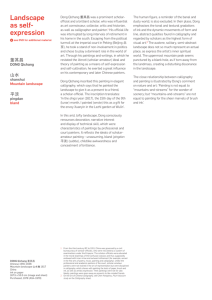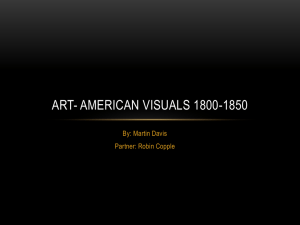Bearings: Landscapes from the IMMA Collection
advertisement
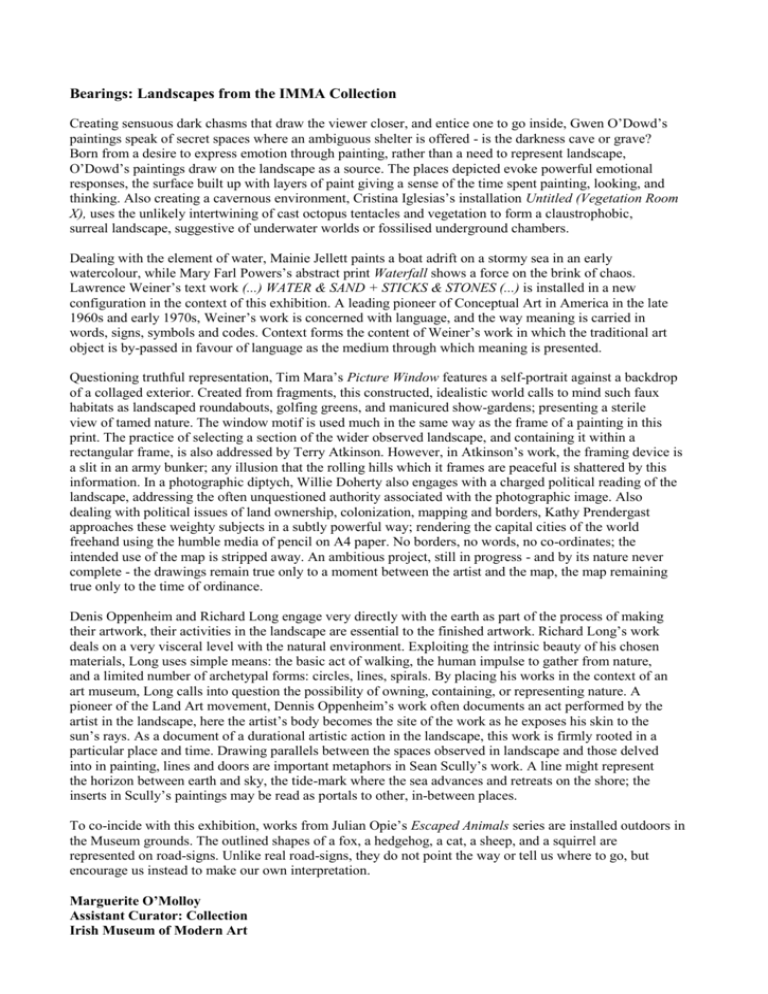
Bearings: Landscapes from the IMMA Collection Creating sensuous dark chasms that draw the viewer closer, and entice one to go inside, Gwen O’Dowd’s paintings speak of secret spaces where an ambiguous shelter is offered - is the darkness cave or grave? Born from a desire to express emotion through painting, rather than a need to represent landscape, O’Dowd’s paintings draw on the landscape as a source. The places depicted evoke powerful emotional responses, the surface built up with layers of paint giving a sense of the time spent painting, looking, and thinking. Also creating a cavernous environment, Cristina Iglesias’s installation Untitled (Vegetation Room X), uses the unlikely intertwining of cast octopus tentacles and vegetation to form a claustrophobic, surreal landscape, suggestive of underwater worlds or fossilised underground chambers. Dealing with the element of water, Mainie Jellett paints a boat adrift on a stormy sea in an early watercolour, while Mary Farl Powers’s abstract print Waterfall shows a force on the brink of chaos. Lawrence Weiner’s text work (...) WATER & SAND + STICKS & STONES (...) is installed in a new configuration in the context of this exhibition. A leading pioneer of Conceptual Art in America in the late 1960s and early 1970s, Weiner’s work is concerned with language, and the way meaning is carried in words, signs, symbols and codes. Context forms the content of Weiner’s work in which the traditional art object is by-passed in favour of language as the medium through which meaning is presented. Questioning truthful representation, Tim Mara’s Picture Window features a self-portrait against a backdrop of a collaged exterior. Created from fragments, this constructed, idealistic world calls to mind such faux habitats as landscaped roundabouts, golfing greens, and manicured show-gardens; presenting a sterile view of tamed nature. The window motif is used much in the same way as the frame of a painting in this print. The practice of selecting a section of the wider observed landscape, and containing it within a rectangular frame, is also addressed by Terry Atkinson. However, in Atkinson’s work, the framing device is a slit in an army bunker; any illusion that the rolling hills which it frames are peaceful is shattered by this information. In a photographic diptych, Willie Doherty also engages with a charged political reading of the landscape, addressing the often unquestioned authority associated with the photographic image. Also dealing with political issues of land ownership, colonization, mapping and borders, Kathy Prendergast approaches these weighty subjects in a subtly powerful way; rendering the capital cities of the world freehand using the humble media of pencil on A4 paper. No borders, no words, no co-ordinates; the intended use of the map is stripped away. An ambitious project, still in progress - and by its nature never complete - the drawings remain true only to a moment between the artist and the map, the map remaining true only to the time of ordinance. Denis Oppenheim and Richard Long engage very directly with the earth as part of the process of making their artwork, their activities in the landscape are essential to the finished artwork. Richard Long’s work deals on a very visceral level with the natural environment. Exploiting the intrinsic beauty of his chosen materials, Long uses simple means: the basic act of walking, the human impulse to gather from nature, and a limited number of archetypal forms: circles, lines, spirals. By placing his works in the context of an art museum, Long calls into question the possibility of owning, containing, or representing nature. A pioneer of the Land Art movement, Dennis Oppenheim’s work often documents an act performed by the artist in the landscape, here the artist’s body becomes the site of the work as he exposes his skin to the sun’s rays. As a document of a durational artistic action in the landscape, this work is firmly rooted in a particular place and time. Drawing parallels between the spaces observed in landscape and those delved into in painting, lines and doors are important metaphors in Sean Scully’s work. A line might represent the horizon between earth and sky, the tide-mark where the sea advances and retreats on the shore; the inserts in Scully’s paintings may be read as portals to other, in-between places. To co-incide with this exhibition, works from Julian Opie’s Escaped Animals series are installed outdoors in the Museum grounds. The outlined shapes of a fox, a hedgehog, a cat, a sheep, and a squirrel are represented on road-signs. Unlike real road-signs, they do not point the way or tell us where to go, but encourage us instead to make our own interpretation. Marguerite O’Molloy Assistant Curator: Collection Irish Museum of Modern Art







